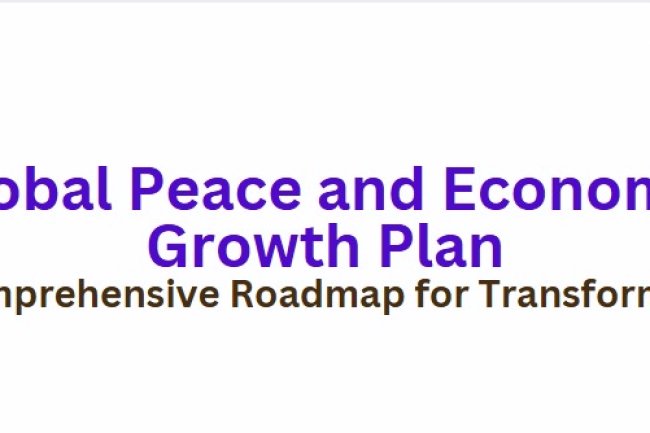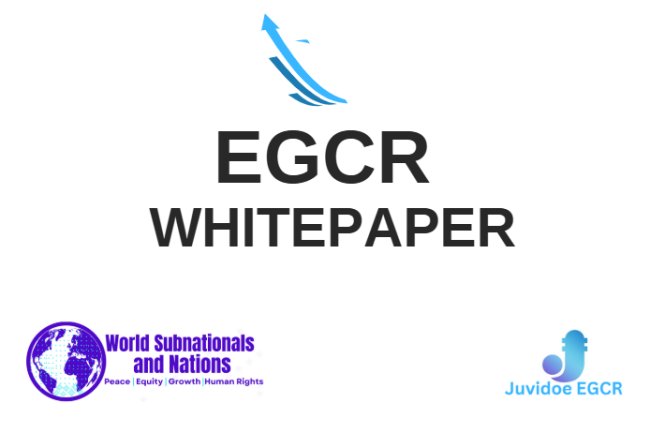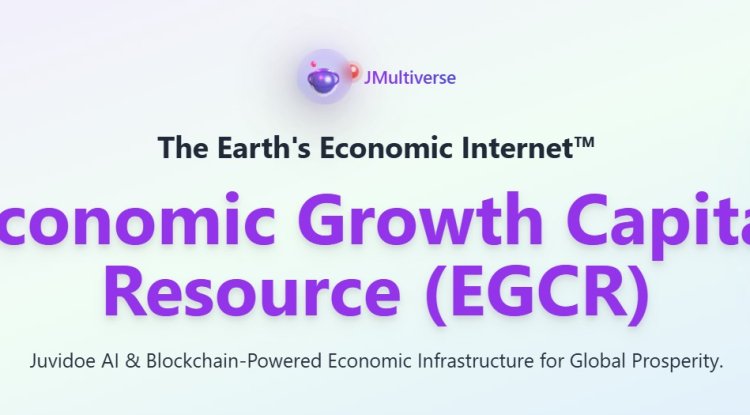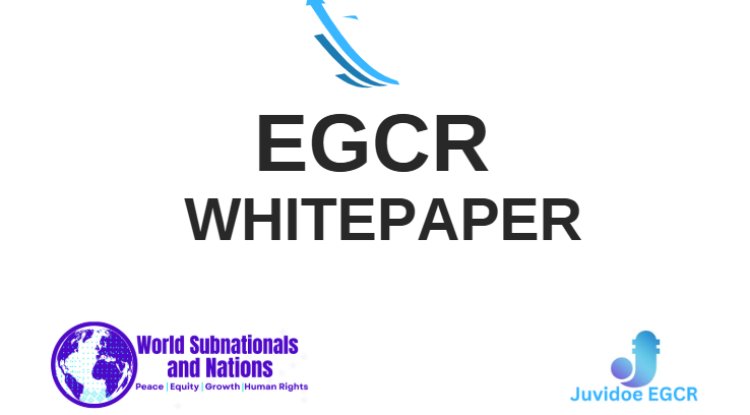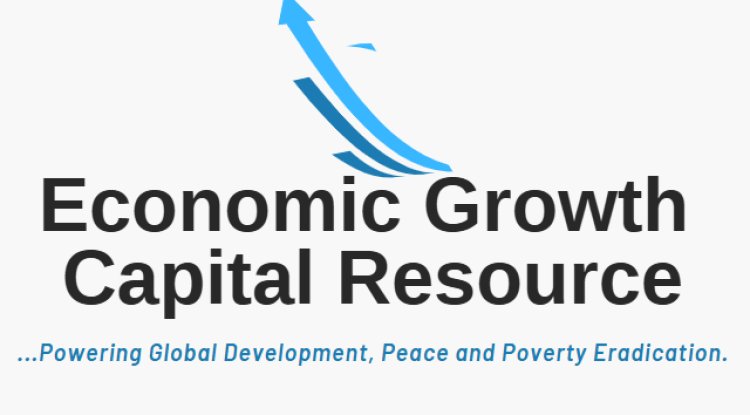INTRODUCING POVERTY REDUCTION INDEX (PRI) as a Tool for Measuring Economic Growth.
A more holistic definition of growth takes into account human development, measured through frameworks such as the Human Development Index (HDI), which emphasizes life expectancy, education, and income. But even HDI, while a step in the right direction, falls short of capturing the full spectrum of well-being. Therefore, we introduce and implement new metrics, such as the Poverty Reduction Index (PRI)—a tool that measures economic success based on how effectively poverty is eradicated within an economy.
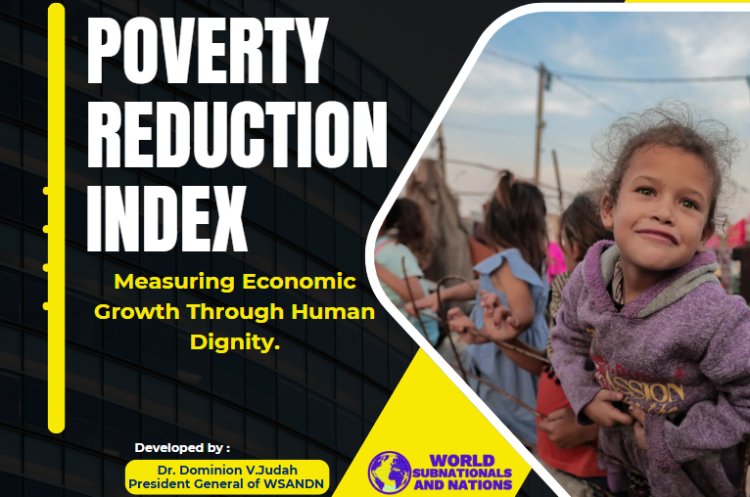
A New Paradigm Economic Growth: A New Perspective
Economic growth has traditionally been measured by one simple metric: Gross Domestic Product (GDP). For decades, policymakers, economists, and institutions have relied on this singular indicator to assess a nation's economic progress. But in the 21st century, it is clear that GDP alone is no longer a sufficient measure of prosperity. If we are to build economies that truly uplift humanity, we must radically rethink the very definition of economic growth.
True growth, the kind that benefits every individual and community, cannot be captured solely by a number on a spreadsheet. Economic growth must be viewed through a broader lens—one that includes social well-being, environmental sustainability, and economic equity. These dimensions are intrinsically linked to the prosperity of nations and individuals alike. Growth cannot be defined purely by wealth accumulation or market expansion; it must account for the quality of life, the equitable distribution of resources, and the sustainability of the natural environment.
When we talk about growth, we are not just referring to the size of an economy or the increase in production. We are talking about the overall well-being of people, the expansion of opportunities, and the improvement of living conditions. It is time to broaden the conversation on growth and include social indicators such as access to quality education, healthcare, housing, and security. It is time to incorporate environmental considerations, ensuring that growth does not come at the expense of future generations or the natural systems that sustain life. And it is time to focus on economic equity, where growth benefits all citizens, not just the wealthy few.
A more holistic definition of growth takes into account human development, measured through frameworks such as the Human Development Index (HDI), which emphasizes life expectancy, education, and income. But even HDI, while a step in the right direction, falls short of capturing the full spectrum of well-being. Therefore, we introduce and implement new metrics, such as the Poverty Reduction Index (PRI)—a tool that measures economic success based on how effectively poverty is eradicated within an economy. If a nation’s GDP increases but its poverty levels remain unchanged or grow, that economy has not truly advanced. Growth must be measured by the reduction of poverty, inequality, and the improvement of human dignity.
For growth to be meaningful, it must benefit everyone. This means shifting away from growth that creates isolated pockets of prosperity to one that ensures the entire population shares in the fruits of development. This shift is not just about economic theory or policies, but about a moral imperative: growth must contribute to human flourishing. It is about recognizing that true prosperity is not just about wealth, but about dignity, opportunity, and access to resources for all individuals, regardless of their background or location.
In this new paradigm of growth, economic success is no longer measured solely by the total output of an economy but by its impact on the human experience. Growth must enrich lives, create opportunities for all, preserve our environment, and promote equality. This is the growth we must strive for—growth that is defined not by numbers on a chart but by the quality of life it provides.
This new definition of economic growth must become the guiding principle for economic systems across the world. Governments, businesses, and organizations must recalibrate their strategies to focus on people-centered growth. The traditional models of growth, which often leave the most vulnerable behind, must be replaced by inclusive models that prioritize the well-being of every individual.
This is where we must start. True growth is growth that serves humanity. It is growth that leaves no one behind and ensures that the benefits of development are shared by all, from the wealthiest nations to the most marginalized communities. It is growth that redefines success—moving beyond mere numbers and towards a more profound and equitable understanding of prosperity. Only when we embrace this new perspective can we begin to address the systemic challenges of poverty, inequality, and underdevelopment that continue to hinder global progress.
This is not a theoretical exercise—it is a call to action. The world has already seen the limitations of traditional economic growth models. It is now time for us to pioneer a new approach—one that puts people and their well-being at the center of economic growth. Only then can we create the resilient, sustainable, and inclusive economies of the future. The future of economic growth is one where every individual, every community, and every nation can thrive. And this is the growth we must work towards.
Traditional Growth Models and Their Shortcomings
Global economic growth has, for decades, been driven by traditional models that largely rely on top-down approaches, where policies and directives emanate from centralized authorities—whether governments, international organizations, or multinational corporations. These models, while well-intentioned, have been ineffective in achieving true, inclusive, and sustainable growth for all. They operate on the flawed assumption that economic development can be efficiently managed and directed from the upper echelons of power, without considering the unique needs, potentials, and realities of local and subnational economies.
The Overlooked Power of Local Economies
One of the most critical shortcomings of traditional growth models is their failure to recognize the full potential of local economies. These top-down approaches assume that national-level policies, formulated in distant capitals or global centers, can address the diverse challenges faced by local communities, regions, and even sectors. This is not only misguided but also counterproductive. The nuances of economic activity, cultural contexts, and social needs differ significantly across regions. By ignoring these factors, global growth models have perpetuated inequalities, leaving behind entire communities and stifling the growth of grassroots initiatives that could otherwise flourish.
In contrast, local economies are the bedrock of any nation’s prosperity. The strength of a nation’s economy does not solely rest on the decisions made in its political or financial capitals but on the dynamism, creativity, and resilience of its local and subnational territories. Ignoring this reality weakens national economies and leaves vast swathes of the population marginalized.
We are actively redefining how we approach growth. By focusing on subnational prosperity, we shift from the top-down method of economic development to one that elevates the local, fosters economic autonomy, and nurtures community-driven growth. This is not a suggestion; it is the path forward. Local economies must take the lead in shaping their own future, with national and global institutions serving as enablers and supporters rather than centralizing forces.
The Flaws of Over-Centralization and One-Size-Fits-All Solutions
The traditional growth model is inherently flawed because it often imposes "one-size-fits-all" solutions across regions with vastly different needs. National policies, whether fiscal, trade, or industrial, often fail to account for the geographical, cultural, and infrastructural disparities that exist between regions. These policies may work in wealthier or more developed areas but leave underdeveloped regions further entrenched in poverty and underdevelopment.
A glaring example of this is the application of global financial aid and foreign direct investment (FDI). These funds are often funneled through national governments and large corporations that implement projects in ways that ignore the needs of local communities. While there may be short-term benefits for the central governments or the corporations involved, these interventions rarely lead to sustainable, grassroots economic growth. Instead, they often result in dependency, with the local populations having little ownership of the economic processes that affect their lives.
Furthermore, centralized models often fail to address local economic crises and vulnerabilities. During global financial crises, for instance, the impact is felt unevenly across regions. Larger economies and urban areas may have the resources and infrastructure to recover quickly, while smaller or poorer regions are left behind, exacerbating inequalities and undermining overall economic stability.
The Economic Growth Capital and Resources (EGCR) model is a fundamental departure from this outdated paradigm. EGCR focuses on channeling resources directly into local economies, empowering regions with the tools, capital, and autonomy to direct their own growth. This model ensures that investments are made with a deep understanding of local needs and priorities, not imposed from the top. It is a system that encourages participation from all levels of society, allowing communities to define and pursue their own economic advancement.
The Failures of National-Level Metrics
Another limitation of traditional growth models is the overreliance on national-level metrics, such as Gross Domestic Product (GDP), as the sole indicators of economic success. GDP, by its very nature, is a poor measure of true prosperity. It does not capture the well-being of individuals, the equitable distribution of wealth, or the sustainable use of resources. It can rise while large segments of the population are left behind in poverty, and it can increase at the expense of the environment or long-term social stability.
The flawed focus on GDP has perpetuated the illusion of economic progress, even when the reality for the majority of people has been stagnation or decline. This approach has also led to a systemic disregard for the essential human and social aspects of development, reducing the complexity of prosperity to a single financial indicator.
Growth should not be measured solely by GDP. The Poverty Reduction Index (PRI) is the new metric for success. By prioritizing poverty alleviation as the cornerstone of economic growth, we ensure that all sectors of society benefit from development. If poverty persists or worsens, no amount of GDP growth can be considered meaningful or sustainable. The PRI represents a more holistic, human-centered approach to measuring the success of economic policies and investments, and it is a model that will guide the future of global economic development.
Quantitative Analysis for the Poverty Reduction Index (PRI) as a Tool for Measuring Economic Growth.



